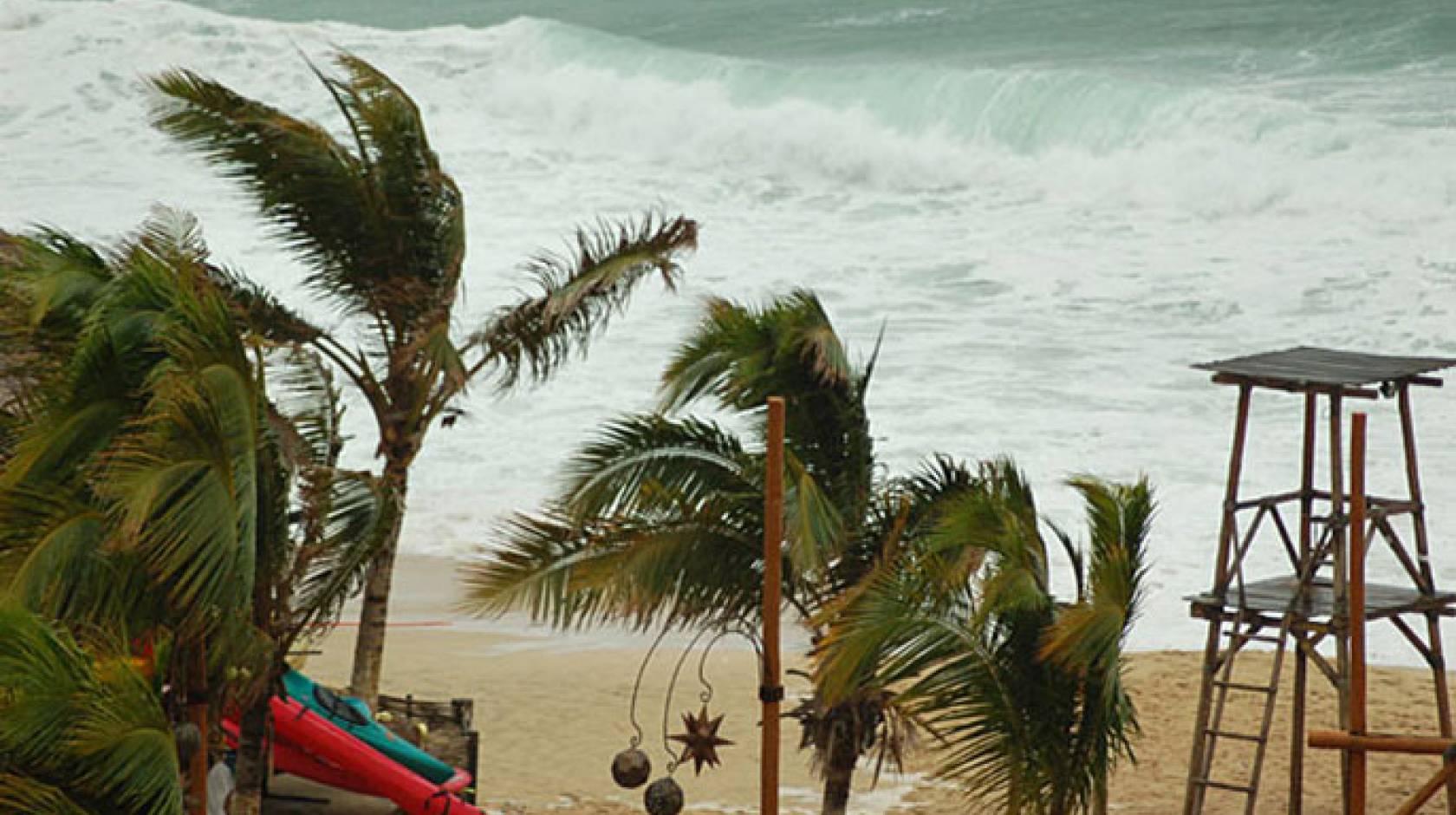Kathleen Maclay, UC Berkeley

Around the world, economic losses due to hurricanes continue for decades after disastrous storms strike, and the losses are not alleviated by spending on reconstruction and may climb with storms that are intensified by climate change. These are among the key findings of a new study co-authored by a UC Berkeley economist and public policy professor.
The study debunks the popularly held belief that environmental disasters disrupt business only for a few months, or at most for a couple of years, and have no long-term effects.
“Long after we forget about a storm, it continues to affect us. We are poorer today because we were hit by Andrew and Katrina years ago, and we’ll be feeling the effect of Sandy for decades,” said Solomon Hsiang, an associate professor at Berkeley’s Goldman School of Public Policy.
He and study co-author Amir Jina, a visiting researcher at Berkeley this year and a doctoral student at Columbia University, lay out their findings in “The Causal Effect of Environmental Catastrophe on Long-Run Economic Growth: Evidence From 6,700 Cyclones,” a study released today (Aug. 4) by the National Bureau of Economic Research (NBER).
It’s not politics vs. environment
“We absolutely think political institutions and public policy matter for economic performance,” said Jina, “but what our results show is that the environment also matters, and in a big way.”
Cyclones affect 35 percent of the world’s population living in 102 countries. Europe is hardly ever hit by hurricanes, but coastal countries in North America, East Asia and Oceania are struck with much more frequency.
And when a cyclone does hit, in a single day it can undo years of economic development, according to the new study, which found that the type of cyclone that comes along every 10 years reduces per capita incomes by 7.4 percent two decades later. This is akin to rewinding an economy 3.7 years.
In total, Hsiang and Jina estimate that the thousands of storm strikes around the world over the last 60 years slowed the annual growth rate of the global gross domestic product (GDP) by about 1.3 percent. The researchers found that after a cyclone strikes, a country’s economic growth slows a little bit each of the next 15 years before stabilizing. This causes countries to be poorer for decades, in comparison to if the storm never struck.
One of the most important findings in the study is the long-lasting effect of hurricanes.
“This result reshapes our understanding of disaster’s human impact from a short-lived period of destruction and recovery to a multi-decade alteration of a country’s future,” said Jina. “This means that we need to rethink disaster policy – focusing much more on the long-term.”
The researchers also suggest that governments might invest more in adaptive, protective technologies that will minimize economic and other disruptions caused by a cyclone.
Wealth of nations
Meanwhile, climate change is predicted to change the frequency and intensity of tropical cyclones, making the economic costs even larger over the rest of the 21st century. Some of the researchers’ estimates of monetary damages include the following losses:
- In the United States, 6 percent of current GDP, or $860 billion
- In China, 13 percent of current GDP, or $1.4 trillion
- In Mexico, 17 percent of current GDP, or $260 billion
- In South Korea, 73 percent of current GDP, or $1 trillion
- In the Philippines, 83 percent of current GDP, or $300 billion
- Worldwide, $9.7 trillion
Both Hsiang and Jina were co-authors of the American Climate Prospectus, a detailed analysis of the economic costs of climate change that generated worldwide headlines when it was released last month.
Hsiang and Jina said their study led them to reject three common theories about environmental disasters like cyclones: the “creative destruction” idea that disasters temporarily stimulate economies due to increased demand for goods and services as people replace what’s been lost and get international aid; that people “build back better” and boost economic performance through vigorous reconstruction; and the “full recovery” idea that economic performance declines initially, but rebounds. They suggest insurance and borrowing money just change when populations pay for losses, but they don’t cause the losses to disappear. Rich countries and poor countries seem to behave the same way when struck by a cyclone.
“Because the economy doesn’t bounce back after a disaster, we are left living with the consequences of our actions today for a generation,” said Hsiang. “That means there are huge gains to implementing smart policies now.”
A comprehensive global history
The researchers’ work, which represents the first comprehensive history of global hurricane exposure, analyzed the economic impact of cyclones in painstaking detail.
The two amassed data with all countries’ exposure to cyclones based on ground-, ship- and satellite-based meteorological observations, and they used a physical model to recreate the wind intensity at every point on the planet’s surface for nearly 7,000 cyclones since 1950. Next, this huge amount of data was combined with economic datasets for statistical analysis.
The researchers were able to compare each country’s economic performance just before the cyclone and its performance right afterward, as well as the gradual, long-term economic impacts that previously could not be seen with smaller datasets.
“This is an example of big data teaching us about the world and helping us design better global policies,” said Hsiang.
“If you’re one of the countries that gets hit over and over again, like the Philippines or Haiti, you have to grow your economy fast just to stay in place,” Hsiang said. “For these countries, growing an economy is like building a sandcastle at the beach. You add to it bit by bit, but if your castle is hit by a wave, you can lose a lot in a flash. You keep building, but each wave sets you back.”

